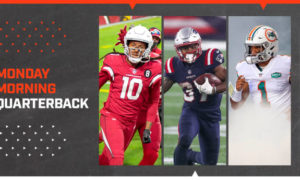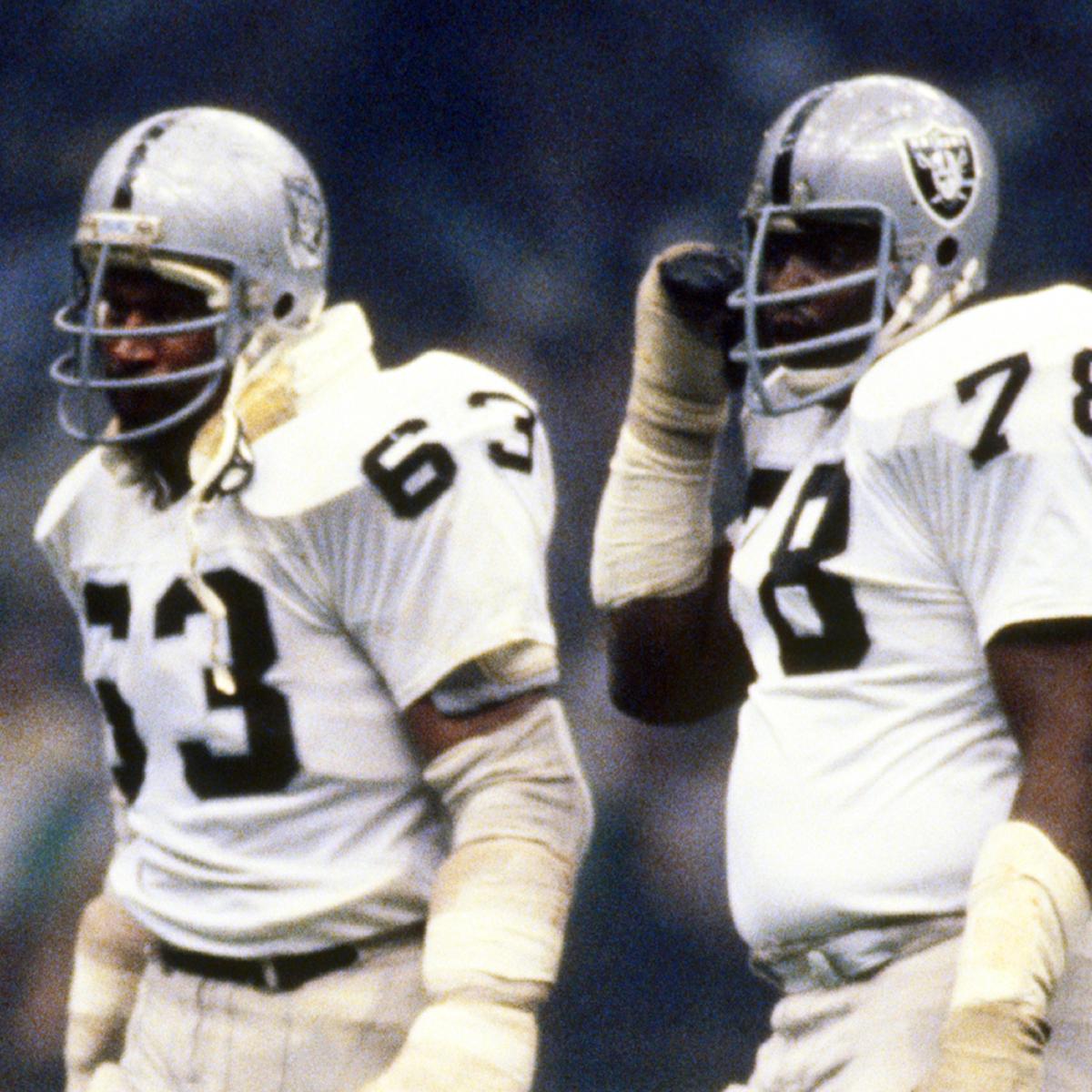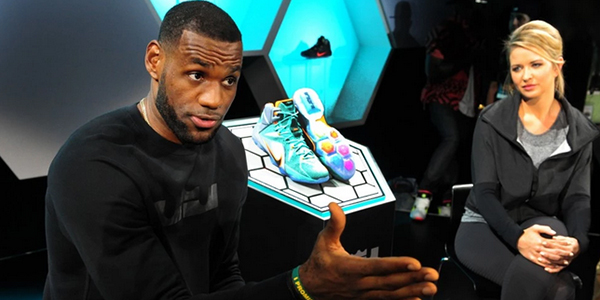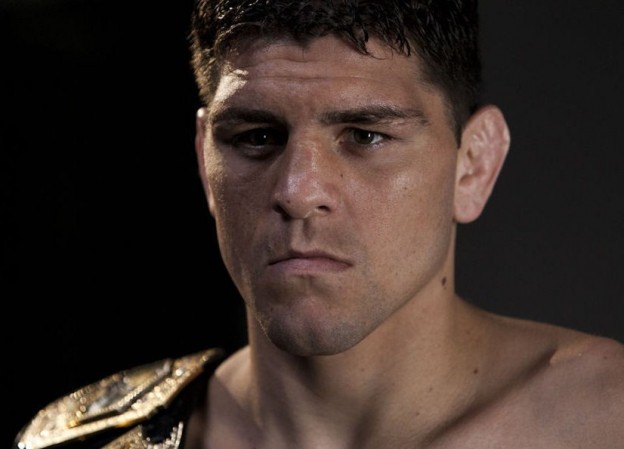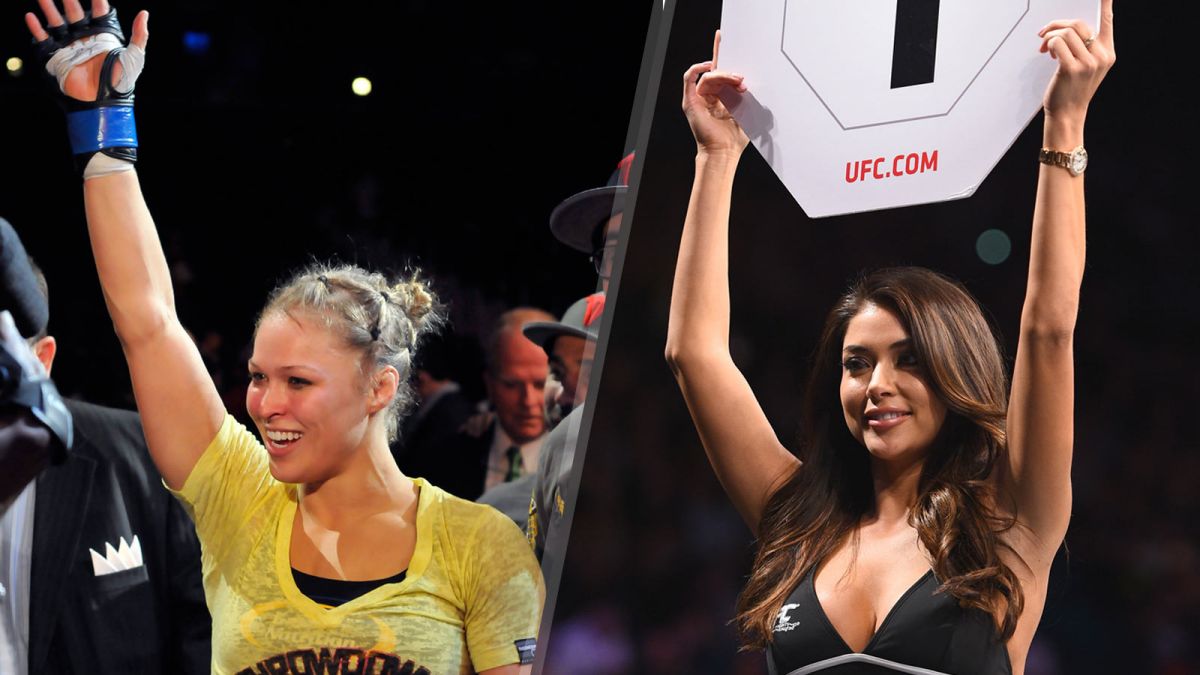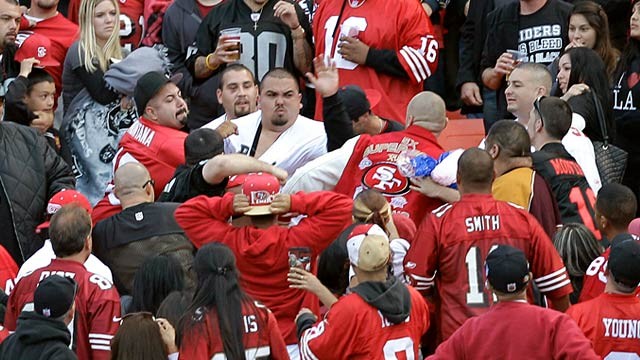Among players, coaches and executives who spent at least one season with the Cardinals, 21 have been elected to the Hall of Fame. Among those are 12 who spent the majority of their career with the franchise.
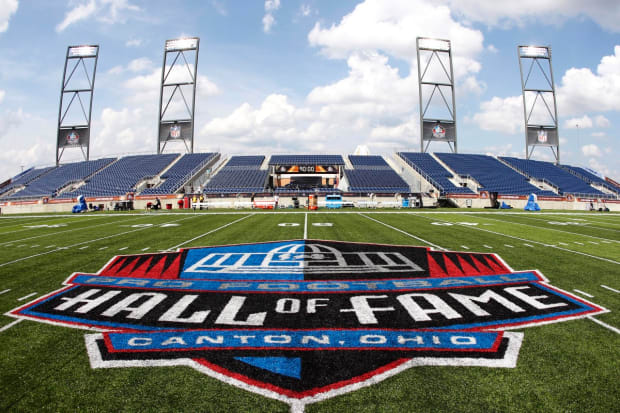
How Many Cardinals Players Are in the Hall of Fame?
As the oldest continually operating franchise in pro football history, the Cardinals have churned out their fair share of Hall of Famers. In total, the Cardinals have 21 players, coaches and/or executives represented in the Hall of Fame. Some spent their entire career with the franchise whereas others made a brief one- or two-season stop. All told, the team accounts for just over 6% of the 346 men who have been enshrined in Canton, Ohio.
Among the team’s representatives are some of the best defensive players in the history of the NFL, one of the Cardinals’ greatest receiving threats of all time, numerous coaches and the man who built the team that won the 1947 NFL championship.
Cardinals Hall of Famers
What follows is a list of every Hall of Famer who has played at least one season for the Cardinals. Members are listed in order by the number of seasons each spent with the franchise and, unless otherwise noted, all bulleted stats refer only to the given member’s time with the franchise.
Larry Wilson
- Position: Safety
- College: Utah
- Seasons Played: 1960–72
- Years as Coach/Executive: 1973–2002
- Seasons With the Cardinals: 1960–2002
- Year Inducted: 1978
- Stats: 52 interceptions for 5 TDs
- Awards: 1966 Defensive Player of the Year, Cardinals Ring of Honor, Cardinals No. 8 Retired
- All-Pro: 1966–70
- Pro Bowl: 1962–63, 1965–70
Larry Wilson closed his career as one of the greatest Cardinals players of all time, and he immediately followed his retirement by joining the team’s front office. He spent a total of 43 years with the Cardinals, first as a dominant defender for 13 seasons, then in various front-office capacities through 2002. Those first 13 years were spent perfecting the safety blitz, while the last 15 were spent as the team’s vice president. His tenure culminated with the announcement that the Cardinals would soon get their own stadium.
Wilson was a seventh-round draft pick of the Cardinals in 1960. Dubbed Wildcat early in his career, Wilson became so adept at the safety blitz—a new trend in the NFL in the 1960s—that coaches started calling the play by Wilson’s nickname. By the middle of the decade, Wilson had become the premier defensive player in the league, and among his career-defining moments was a string of seven straight games in 1966 when he intercepted a pass. That stretch included a 91-yard touchdown and a three-interception game for the second season in a row. His 10 picks that season paced the league, and an interception for Wilson was usually good news for the Cardinals, who went 30-13-2 in games when he picked off a pass. He maintains team records with 52 career interceptions and 800 interception return yards. His long return of 96 yards stood as a team record until 2001.
For all of Wilson’s successes, however, the team achieved very little during his tenure. Wilson is one of few Hall of Famers to have never appeared in a postseason game, and the Cardinals had an 83-86-11 record throughout his playing career.
Wilson—one of just five Cardinals to have his number retired—was hired as the team’s scouting director following his retirement, and he moved up to become the general manager in 1977. He briefly stepped in as interim coach in 1979, picking up two wins and a loss after Bud Wilkinson was fired. By 1987 Wilson added vice president to his ledger, remaining with the Cardinals until his retirement after the 2002 season.
Charley Trippi
- Position: All-Purpose, Coach
- College: Georgia
- Seasons Played With the Cardinals: 1947–55
- Seasons Coached With the Cardinals: 1956–57, 1963–65
- Year Inducted: 1968
- Stats: 3,506 rushing yards; 2,547 passing yards; 1,321 receiving yards; 53 total TDs
- Awards: Cardinals Ring of Honor
- All-Pro: 1948
- Pro Bowl: 1952–53
Charley Trippi was primarily known for his abilities as a running back, but he actually played a lot more positions than that in his nine years with the Cardinals. He was also deployed as a quarterback, return man, defensive back and punter. After retiring, he joined the team as an assistant coach.
Before going pro, Trippi had multiple options. He had a dual-contract offer from the short-lived New York Yankees of the newly founded All-America Football Conference—which included the option to play baseball for the Yankees. Several other professional baseball teams were pursuing him, as well. Finally, he had a $100,000 offer to play football for the Cardinals. He opted for the Cardinals and became one of the franchise’s most remembered players.
As a rookie, Trippi immediately became a contributing player—accumulating 206 all-purpose yards and two touchdowns against the Eagles in the 1947 NFL championship game. He averaged nearly 5.0 yards per carry over his first four seasons, then switched to quarterback for two seasons. He returned as halfback for a year, then switched to the defensive backfield and punted. In the 1955 preseason, he was viciously tackled and sustained injuries that ultimately ended his playing career. He retired as the franchise’s all-time leader in rushing yards.
Following retirement, Trippi was an assistant coach for the Cardinals, primarily focusing on the team’s offensive backfield. Currently, at age 98, he is the oldest living NFL Hall of Famer, and with 14 total seasons of service with the Cardinals, he is among the most tenured individuals in franchise history.
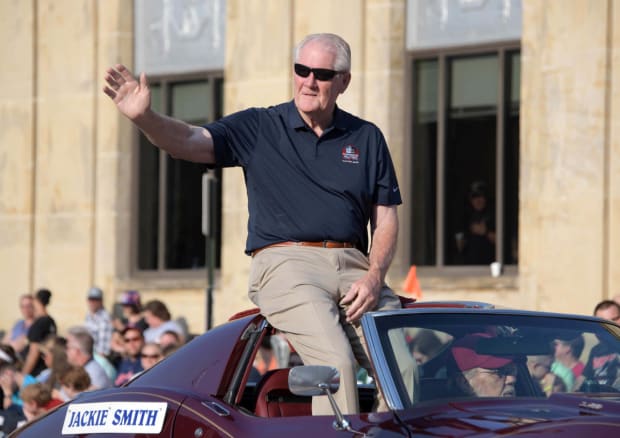
Jackie Smith
- Position: Tight End
- College: Northwestern State University (La.)
- Seasons Played: 1963–78
- Seasons With the Cardinals: 1963–77
- Year Inducted: 1994
- Stats: 480 catches for 7,918 yards and 40 TDs
- Pro Bowl: 1966–70
Jackie Smith came to the Cardinals as the 129th pick in the 1963 NFL Draft, and in just his second career game, he showed he’d become a capable NFL player. On that day against the Steelers, Smith established career highs he would never beat with nine catches for 212 yards and two touchdowns. His best season was in 1967, when he had four 100-yard games en route to 1,205 yards for the season. He added a career-high nine touchdowns and was red hot over the last four games of the season, hauling in 20 passes for 455 yards and five touchdowns.
Smith was a dependable target from the get-go, playing in the first 121 straight games of his career until he was injured in 1971. He picked up at least 100 yards in 22 games during his career and snatched a touchdown in all but five of those. From 1967 to ’70, he had a reception in 46 straight games while providing superb blocking. His career yardage total is the best-ever for a Cardinals tight end, which was the NFL record until 1990, and he is third all-time in team history for receiving yards.
The legend retired after the 1977 season, but he reportedly wanted to come back to the Cardinals for the ’78 season. Ultimately, he ended up going to the Cowboys as a backup and went to the Super Bowl that season, while the Cardinals fell to a 6–10 record—the team’s worst mark in five seasons.
Charles Bidwill
- Position: Owner
- College: Loyola of Chicago
- Seasons as Cardinals Owner: 1933–47
- Year Inducted: 1967
- Awards: Cardinals Ring of Honor
Charles Bidwill spent his first couple of years in professional sports as a vice president of the Bears. And while he would have preferred to have purchased that team from George Halas, he ended up buying the Cardinals for $50,000 instead. Among his first deeds with the Cardinals was claiming the 1925 NFL championship, which had been awarded to the team by the NFL but had never been accepted. The title was the story of much controversy due to scheduling and ineligible players, among other aspects, but Bidwill staked a claim to the first of just two championships for the Cardinals.
Bidwill never found much success with the Cardinals, however, as the team had just one winning season between 1933 and ’45. In 1944, his Cardinals combined with the Steelers due to a shortage of players because so many had joined the fight in World War II. Known as Card-Pitt, the team was dubbed the Carpets after going 0–10. Two years later, the Chicago Rockets joined the All-American Football Conference, giving Chicago three professional football teams.
Refusing to be the worst team in town, Bidwill signed Charley Trippi to an expensive contract to create the “Million Dollar Backfield,” a group of offensive forces that propelled the Cardinals to the 1947 NFL title. Despite his role in building that team, Bidwill was unfortunately unable to enjoy the championship. He died at age 51, eight months before his team made history.
Roger Wehrli
- Position: Cornerback
- College: Missouri
- Seasons Played With the Cardinals: 1969–82
- Year Inducted: 2007
- Stats: 40 interceptions, 22 fumble recoveries, 2 TDs
- Awards: Cardinals Ring of Honor
- All-Pro: 1975–77
- Pro Bowl: 1970–71, 1974–77, ’79
Roger Wehrli came to the Cardinals as a first-round draft selection in 1969, starting a 14-year career with the franchise that made him one of the top defensive players in team history. He was consistently among the league’s top defensive backs every season. He had six interceptions in a season twice (1970 and ’75), and he picked off at least one pass every season from 1969 to ’81 with the exception of just one season (’72).
In 1981 and ’82, Wehrli was a backup on a team that was rebuilding with younger players. He did have a highlight game in 1981 against the rival Eagles, however, intercepting two passes—the fourth time in his career he had done so. Wehrli was a reliable workhorse who once played 125 straight games, missing only six in total throughout his career. He recovered 22 fumbles for the Cardinals, retiring atop the team’s all-time leaderboard (and still tied for first), and his 40 interceptions were second all-time (now third).
Dan Dierdorf
- Position: Offensive Tackle
- College: Michigan
- Seasons Played With the Cardinals: 1971–83
- Year Inducted: 1996
- Stats: 160 games, 7 fumble recoveries
- Awards: Cardinals Ring of Honor
- All-Pro: 1976–78
- Pro Bowl: 1974–78, ’80
Dan Dierdorf began his 13-year career with the Cardinals as a second-round draft pick, and by his fourth season he had cemented himself as a fixture on the offensive line. He didn’t miss a game at right tackle from 1972 to ’76, which helped push the franchise to 31 wins and two postseason appearances from 1974 to ’76. In those three seasons, St. Louis finished 10th, 5th (tied with Minnesota) and 3rd respectively in total offensive yardage. In 1975, St. Louis quarterbacks were sacked just eight times in 14 games. He was also recognized by his peers—being named the best offensive lineman in football by the NFL Players Association from 1976 to ’78.
In 1979 Dierdorf sustained a major knee injury, and his play was never the same. He did start every game from 1980 to ’82 and made a Pro Bowl in ’80, but by ’83 the knee was too bothersome and he announced his retirement in the middle of the season. In 1982, he moved to center and mentored younger players on the line, helping the Cardinals to their first winning season since 1976. After retiring, he enjoyed a long and successful career in sports broadcasting.
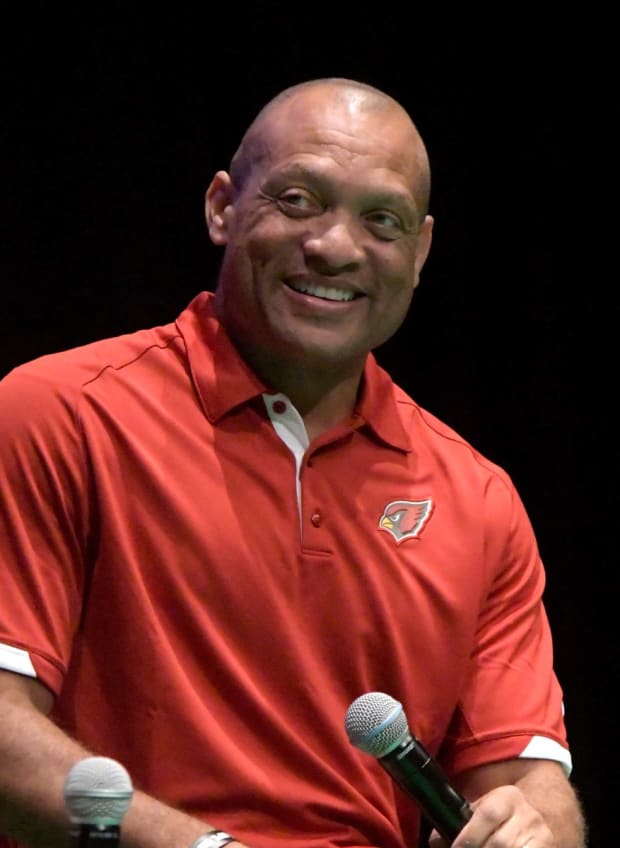
Aeneas Williams
- Position: Defensive Back
- College: Southern University
- Seasons Played: 1991–2004
- Seasons With the Cardinals: 1991–2000
- Year Inducted: 2014
- Stats: 568 tackles, 46 interceptions, 9 TDs
- Awards: Cardinals Ring of Honor
- All-Pro: 1995, ’97
- Pro Bowl: 1994–99
Aeneas Williams was much more than a standout defender during his decade-long tenure with the Cardinals. Known as the heart and soul of the team and its spiritual leader, Williams led by example off the field, and did his part on the field, too. He was a shutdown cornerback taken in the third round of the 1991 NFL Draft and is remembered as one of the greatest defensive players in franchise history.
After suffering through five losing seasons, Williams considered leaving the Cardinals for the Jaguars in 1996, but he ended up signing a five-year contract to remain with Phoenix. He’d help the Cardinals to the postseason in 1998 and would then intercept Hall of Fame quarterback Troy Aikman twice in a first-round victory—the team’s first win in the postseason since 1947. Once his contract expired, Williams was given the franchise tag and then traded to the Rams during the 2001 NFL Draft.
With the Cardinals, Williams ranks second all-time with 46 interceptions and still holds the club record with six interception returns for touchdowns. In 1994 he led the league with nine interceptions, and he had six interceptions as a rookie. He also tied an NFL record when he returned a recovered fumble 104 yards against Washington in 2000.
Ollie Matson
- Position: Running Back
- College: San Francisco
- Seasons Played With the Cardinals: 1952, 1954–58
- Year Inducted: 1972
- Stats: 3,331 rushing yards; 24 TDs; 2,150 receiving yards; 16 TDs
- Awards: Cardinals Ring of Honor
- All-Pro: 1952, 1954–57
- Pro Bowl: 1952, 1954–58
Ollie Matson joined the Cardinals as the No. 3 pick in the 1952 NFL Draft. He was the fastest player in the league after winning two medals as a sprinter in that year’s Olympic Games. He spent 1953 in the U.S. Army and came back to become one of the leading players for the Cardinals over the next several seasons. In four of the next five years, he would gain at least 900 offensive yards, eclipsing the 1,000-yard mark in 1954, ’56 and ’57.
The finest game of his career came during Week 9 of the 1954 season when he carried the ball eight times for 163 yards and a career-high three scores—and hauled in five passes for 64 yards and another touchdown in a 38–16 win over Washington. A week later, he was a shining star again, picking up a career-best 161 receiving yards on five catches and adding another 115 on the ground in a loss to Pittsburgh.
After six seasons with the Cardinals, Matson was traded to the Rams in an unusual deal that saw the Cardinals get nine players in return. His 3,331 rushing yards for the Cardinals were second all-time in franchise history at the time of his trade (now ninth).
“Night Train” Lane
- Position: Cornerback
- College: Western Nebraska C.C.
- Seasons Played: 1952–65
- Seasons With the Cardinals: 1954–59
- Year Inducted: 1974
- Stats: 30 interceptions, 2 TDs
- Awards: Cardinals Ring of Honor
- All-Pro: 1956
- Pro Bowl: 1954–56, ’58
Dick “Night Train” Lane is remembered as one of the best ball-hawking cornerbacks in the history of the NFL. He burst onto the scene as a rookie in 1952, setting an NFL record with 14 interceptions for the Rams. Despite his obvious talent, Lane was traded to the Cardinals as part of a three-team deal before the 1954 season.
Lane led the league in interceptions with 10 in 1954. Two seasons later, his defensive prowess helped lead the Cardinals to their first winning season since 1949. Because of his athleticism, he was sometimes deployed on offense, and in 1955 he scored on a 98-yard touchdown reception. In six seasons in Chicago he intercepted 30 passes, which was a team record when was traded to the Lions in 1960. Currently, his mark is fourth-best in Cardinals history.
Paddy Driscoll
- Position: Quarterback, Coach
- College: Northwestern
- Seasons Played With the Cardinals: 1920–25
- Seasons Coached: 1920–22, ’36, 1941–57
- Seasons Coached With the Cardinals: 1920–22
- Year Inducted: 1965
- Stats: 17 total TDs
- Awards: Cardinals Ring of Honor
- All-Pro: 1920, 1922–23, ’25
Paddy Driscoll was the first coach and quarterback in franchise history, and he is considered one of the best players from the earliest days of the NFL—despite weighing in at just 160 pounds. Driscoll’s play, which came at the cost of $300 per game, led the Cardinals to a fourth-place finish in the standings, and he was honored by becoming the first-ever All-Pro quarterback. Between his passing, rushing and kicking abilities, Driscoll left his mark all over the field throughout his career. In 1925 Driscoll and the Cardinals won the NFL championship, but the Bears lured him across town in the offseason with an offer of $10,000.
Jimmy Conzelman
- Position: Coach
- College: Washington (Mo.)
- Seasons Coached: 1921–42, 1946–48
- Seasons With the Cardinals: 1940–42, 1946–48
- Year Inducted: 1964
- Stats: 34 NFL wins, 1947 NFL championship
- Awards: Cardinals Ring of Honor
Jimmy Conzelman was a standout quarterback in his playing days, but he made his mark on the Cardinals as a head coach. He first took on the role from 1940 to ’42, and after compiling an 8-22-3 record he spent ’44 as an assistant for the MLB Browns. He returned to the Cardinals in 1946, and with some extra stars on the roster, he led two of the greatest seasons in franchise history.
Under his watch, the 1947 Cardinals finished the regular season at 9–3 and dispatched the Eagles for the NFL championship. They followed up with an 11–1 record in 1948, but it was the Eagles who would claim that season’s league crown. Conzelman unexpectedly resigned following the season, and he finished with a 34-31-3 record in his six years at the helm.
Duke Slater
- Position: Tackle
- College: Iowa
- Seasons Played: 1922–31
- Seasons Played With the Cardinals: 1926–31
- Year Inducted: 2020
- Stats: All-NFL 1923, 1925–26, ’29
Duke Slater—an All-American tackle out of Iowa and the first Black lineman in the NFL—blocked for a series of Hall of Famers and runners. But while his talent on the field was undeniable, he was long bypassed as a Hall of Fame candidate in spite of being a finalist in both 1970 and ’71. He was finally inducted in 2020, a full 58 years after becoming eligible.
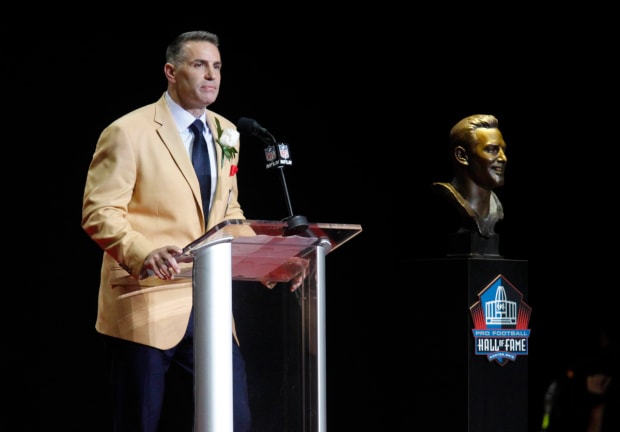
Kurt Warner
- Position: Quarterback
- College: Northern Iowa
- Seasons Played: 1998–2009
- Seasons With the Cardinals: 2005–09
- Year Inducted: 2017
- Stats: 15,843 passing yards, 100 TDs
- Awards: Cardinals Ring of Honor
- Pro Bowl: 2008
After building his Hall of Fame candidacy with a run of success for the Rams, Kurt Warner closed his career with five seasons for the Cardinals to become their best quarterback of all time. In his first three seasons in Arizona, he was never the solidified starter, competing with youngsters like Josh McCown and Matt Leinart. But once he was named the starter for the 2008 season, Warner led the Cardinals to one of the most memorable seasons in franchise history.
That season, Warner threw for 4,583 yards and a then-franchise record 30 touchdowns while leading the team to a 9–7 record and their first playoff appearance since 1998. As a wild-card team, Arizona faced a long road to a championship, but Warner threw for eight touchdowns over the first three rounds of the playoffs to give the team their first berth in a Super Bowl. He threw for 377 yards in Super Bowl XLIII, but his team fell to the Steelers, 27–23.
He pushed the Cardinals into the playoffs again in 2009. With two touchdown passes in Week 16, Warner became just the second quarterback in NFL history to throw 100 touchdowns for two teams, and he threw five touchdowns in a wild first-round postseason win over the Packers. Warner stands fifth all-time in franchise history, with 15,843 passing yards and 100 touchdowns.
Walt Kiesling
- Position: Offensive Line
- College: St. Thomas (Minn.)
- Seasons Played: 1926–38
- Seasons With the Cardinals: 1929–33
- Year Inducted: 1966
- All-Pro: 1930
Walt Kiesling was a football lifer who spent 34 years in professional football. That included five of his prime years with the Cardinals. He was regarded as one of the best offensive linemen of his time, helping his team finish fourth in the standings twice. He was selected by the Hall of Fame as an offensive lineman on the NFL’s 1920s All-Decade Team.
Ernie Nevers
- Position: Fullback, Coach
- College: Stanford
- Seasons Played: 1926–27, 1929–31
- Seasons Played With the Cardinals: 1929–31
- Seasons Coached: 1927, 1930–31, ’39, ’46
- Seasons Coached With the Cardinals: 1930–31, ’39
- Year Inducted: 1963
- Stats: 26 rushing TDs
- Awards: Cardinals Ring of Honor
- All-Pro: 1929–31
Ernie Nevers didn’t have a long career, but he made quite an impression on NFL history. A four-sport athlete at Stanford, he played professional football and baseball and is considered one of the finest NFL players of the league’s early years.
In his first season with the Cardinals, he established an NFL record by scoring all of his team’s points in a 40–6 win over the Bears. He routinely scored all of his team’s points because he was a prolific runner, passer and kicker, and he scored 26 rushing touchdowns in three seasons with the Cardinals. In 1931, an informal poll placed Nevers in a tie for second as the greatest football player in history up to that point. As a coach for the Cardinals, he was 11-19-2.
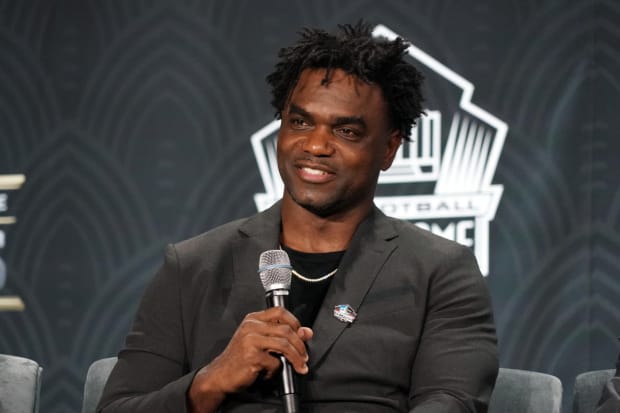
Edgerrin James
- Position: Running back
- College: Miami (Fla.)
- Seasons Played: 1999–2009
- Seasons Played With the Cardinals: 2006–08
- Year Inducted: 2020
- Stats: 2,895 rushing yards for 16 TDs
- Accolades: NFL All-Decade Team of the 2000s
A first-round pick by the Colts in the 1999 NFL Draft, Edgerrin James won Rookie of the Year honors and led the league in rushing yards his first two seasons. After seven strong seasons with the Colts, he signed with the Cardinals as an unrestricted free agent prior to the 2006 season.
While he is best known for his time in Indianapolis, James was an effective runner for three seasons in Arizona, rushing for 1000-yards in two of those seasons and helping the Cardinals to an appearance in Super Bowl XLIII. He finished his career with a single season in Seattle.
Hall of Famers Who Made a Stop With the Cardinals
Several Hall of Famers made only a brief stop with the Cardinals during their career. The following players spent two seasons or fewer in a Cardinals uniform or on the sidelines as their coach.
Emmitt Smith
- Position: Running Back
- College: Florida
- Seasons Played: 1990–2004
- Seasons With the Cardinals: 2003–04
- Year Inducted: 2010
- Career Stats: 18,355 rushing yards; 164 TDs
- Awards: 1990 Rookie of the Year, 1993 MVP, 1993 Bert Bell Award, Cowboys Ring of Honor
- All-Pro: 1992–95
- Pro Bowl: 1990–95, 1998–99
With the Cardinals, Emmitt Smith had 1,193 rushing yards and 11 touchdowns over two seasons. That included a 937-yard effort in 2004, the final season of his career.
Earl “Curly” Lambeau
- Position: Coach
- College: Notre Dame
- Seasons Coached: 1921–53
- Seasons With the Cardinals: 1950–51
- Year Inducted: 1963
- Career Stats: 226 wins, 6 NFL championships
The namesake to the Packers’ stadium, Earl “Curly” Lambeau posted a 7–15 mark in two seasons with the Cardinals after winning six NFL championships in Green Bay.
Jim Thorpe
- Position: Running Back
- College: Carlisle
- Seasons Played: 1915–17, 1919–26, ’28
- Seasons With the Cardinals: 1928
- Year Inducted: 1963
- All-Pro: 1923
Often considered among the greatest athletes of all time, Jim Thorpe donned the Cardinals’ uniform for the final season of his football career. Thorpe also played professional baseball and basketball, and he won two gold medals in the 1912 Olympics.
Don Maynard
- Position: Wide Receiver
- College: UTEP
- Seasons Played: 1958, 1960–73
- Seasons With the Cardinals: 1973
- Year Inducted: 1987
- Career Stats: 11,834 receiving yards; 88 TDs
- AFL All-Star: 1965, 1967–69
- Accolades: All-Time AFL Team (1970)
Don Maynard played the final season of his career with the Cardinals, but he didn’t see much action at wide receiver, hauling in one catch for 18 yards.
Guy Chamberlin
- Position: Halfback, End, Coach
- College: Nebraska
- Seasons Played: 1920–27
- Seasons Played With the Cardinals: 1927
- Seasons Coached: 1922–27
- Seasons Coached With the Cardinals: 1927
- Year Inducted: 1965
- Career Accolades: 4-time NFL champion
- All-Pro: 1920
Berlin “Guy” Chamberlin played end and coached the Cardinals in the last season of his career. The team finished with a 3-7-1 record that year.

Potential Hall of Famers in Waiting
The list of Hall of Famers who played with or coached the Cardinals is sure to grow soon. Here are a few likely candidates.
- Alan Faneca: Offensive lineman Faneca was announced as a semifinalist for the 2020 ballot on Nov. 26, 2019. He spent the 2010 season with the Cardinals, and he started all 16 games at left guard. That was his last season and the ninth straight in which he started every game of the season, but he was not among the players elected to the Hall of Fame for 2020.
- Simeon Rice: Defensive end Rice was named a 2020 semifinalist by the Modern Era committee. It is Rice’s second time as a semifinalist; he also picked up the honor in 2018. Rice played for the Cardinals from 1996 to 2000. He was a 1999 Pro Bowl selection after recording a career-high 16.5 sacks and forcing five fumbles. In five seasons with Arizona, he had 51.5 sacks and 225 total tackles.
- Don Coryell: Former coach Coryell has also been a five-time finalist in balloting by a selection committee, and many have argued for his inclusion in the Hall of Fame. Coryell coached the Cardinals for five seasons, and his team won the NFC East division titles in 1974 and ’75. He posted a 42-27-1 record with the Cardinals, and he also led the Chargers to several postseason berths. He was again up for potential induction as the Hall of Fame inducted a special Centennial Class in 2020 for the NFL’s 100th season. Coryell and another former coach, Buddy Parker, were both finalists but didn’t make the cut.
- Larry Fitzgerald: As one of the best wide receivers ever to play for the Cardinals, Fitzgerald could be inducted one day soon. He is expected to be inducted as a first-ballot Hall of Famer.
- Anquan Boldin: Boldin is another one of the best wide receivers ever to play for the franchise. Though he has a less-compelling argument for induction, he very easily could join the ranks.
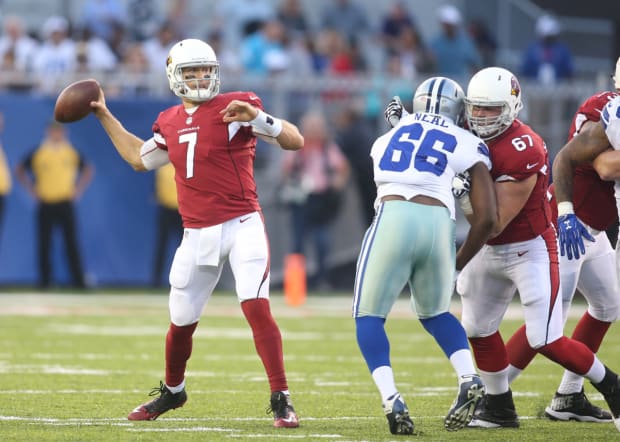
Cardinals in Hall of Fame Games
The Cardinals have appeared in the annual Hall of Fame Game five times, posting a 1-3-1 record. Most notably, the Cardinals played the Giants in the inaugural Hall of Fame Game in 1962 and had a great matchup against the Cowboys in a 2017 loss.
1962: Cardinals 21, Giants 21
The Cardinals struggled out of the gate, allowing the Giants to take a 21–0 lead before even finding a first down on offense. St. Louis and first-year head coach Wally Lemm, however, made a furious comeback. Joe Childress scored on a two-yard run in the second quarter to trim the deficit. Sonny Randle caught an eight-yard touchdown pass out of halftime, and safety Larry Wilson picked up a fumble on New York’s next play and rumbled into the end zone.
1974: Cardinals 21, Bills 13
Tensions were high as striking members of the NFL Players Association tried to disrupt the Hall of Fame exhibition game. Larry Stallings was the only veteran player from the Cardinals to cross the picket line and play in the game, which saw St. Louis control most of the matchup. Rookies and free agents played a clean game in front of 17,286 fans, while veterans and members of other unions protested outside the gate.
1986: Patriots 21, Cardinals 16
The Cardinals got just one touchdown—on a punt return of 91 yards by Vai Sikahema—but even with a handful of field goals, it wasn’t enough to get past the Patriots. Rookie kicker John Lee, the first Korean-born player in the NFL, knocked in all three of his field goals (28, 39 and 25 yards) and an extra point.
2012: Saints 17, Cardinals 10
One year after the Hall of Fame was canceled for the first time due to a lockout, the Cardinals fell to the Saints in the first game of a quarterback competition between John Skelton and Kevin Kolb, who started but threw an interception and suffered minor injuries. The game also featured replacement officials, as the referees were locked out. Arizona punter Dave Zastudil booted a 79-yard punt, a Hall of Fame Game record.
2017: Cowboys 20, Cardinals 18
For the second time, the Cardinals were invited to the Hall of Fame Game a year after it was canceled. The 2016 edition was called off due to poor field conditions, and the Cowboys and the Cardinals thrilled in the 2017 version. New quarterback Blaine Gabbert—who was fighting for the backup role behind Carson Palmer—led a pair of long scoring drives early in the game for a 15–0 lead. Dallas stormed back for 10 points, then added a touchdown and field goal in the second half for the victory. Hall of Fame tight end Jackie Smith, who played 15 seasons with the Cardinals and one with the Cowboys, sang the National Anthem before the game.
——————-
Did you miss our previous article…
https://sportsgooru.com/nfl/maqb-raiders-unlikely-hero-a-credit-to-their-depth-how-will-haskins-handle-backup-role/



